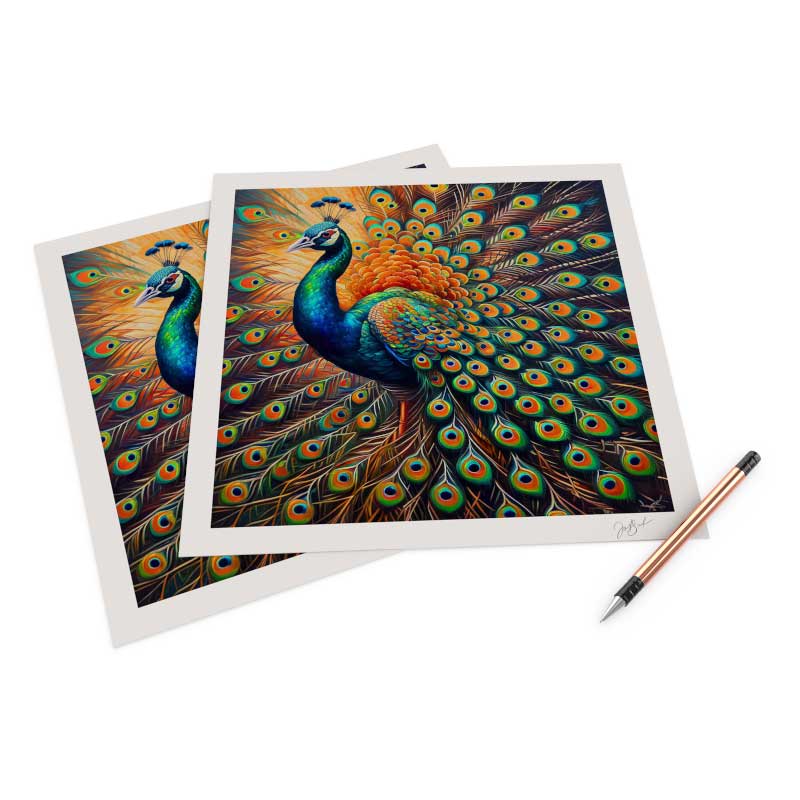There’s a particular kind of anticipation that comes with opening a package of freshly printed artwork. There can be a mix of excitement and nervous anticipation in some cases, especially if you are new to printing your artwork. Will the colors be right? Did the file I submitted hold up? Will it look as good as I imagined, or better?
Inspecting your prints is more than just a casual glance. It’s a crucial part of the process, especially if you plan to reorder or sell your work. This is why ordering a hard copy proof is such a smart move. It gives you a tangible sample to evaluate before committing to a larger run. But inspection isn’t just about looking; it’s about how you look.
The Basics: Clarity and Composition
The first things you’ll want to check are the most obvious: is the image sharp and well-composed? Are the edges crisp? Is everything aligned the way you intended? These are usually evident the moment you unwrap the print. If any of the images are blurry, then that usually means an out-of-focus shot if you shot your artwork with a camera. It can also be attributed to enlarging an image too much without the proper tools to do so. This will mean that you want to try capturing a better shot of the artwork or not print as large as you tried.
A Closer Look: Color Accuracy
Color, however, is a trickier beast. What looks perfect in one room might seem slightly off in another. That’s because the lighting around you can play tricks on your perception—a phenomenon known as metamerism. Simply put, metamerism means colors can appear to shift depending on the light source. That deep blue might look violet under fluorescent bulbs or more muted under a more yellowish light source.
To get the most accurate sense of your colors, examine your print in natural daylight—either outdoors or near a window with direct sunlight. This helps you see the print as it was meant to be seen, without artificial lighting throwing off your judgment.
Printer Technology Continues to Evolve
Sometimes, colors may look different even under natural light, and not necessarily in a bad way. You might notice deeper saturation or more vibrant hues than you remember. That could be thanks to improvements in printing technology.
Modern printers, especially the newer Canon models we use for our giclée prints, have a wider color gamut than their predecessors. That means they can more faithfully reproduce colors that older printers struggled with. As a result, your prints might appear richer and more dynamic, particularly in areas that previously seemed hard to match.
In addition, new ink formulations have been engineered to create more vivid results, especially on fine art papers and other specialty media that were once more subdued. It’s a step forward, not a flaw.
Conclusion
Evaluating a print isn’t just about spotting errors—it’s about appreciating the nuances of the medium and understanding how light, technology, and materials all work together. So next time your prints arrive, don’t just tear into the box and give them a quick once-over under your desk lamp. Take a moment, find some natural light, and really see what you’ve created. You might be pleasantly surprised.
Giclee Printing at FinerWorks
One of the largest ranges of paper selections, while using the highest level of archival print technology allowing superior detail and color, you can create custom giclee prints of your artwork and photos.


I framed the 12×15″ print you sent (beautiful btw) with a lightweight plexiglass that came with the frame. I’m not happy with the plexiglass because it has blemishes that I don’t seem to be able to correct. Also, it’s a weird size so hard to replace. So, my question is…… is it necessary to frame the print behind plexiglass or glass, or can it stand on its own without covering it with those things? P.S. I also matted it. Thanks.
It is possible to order a framed print without the acrylic glass. However, contact our customer service department if there is a problem with the acrylic glass provided so we can possibly replace it.